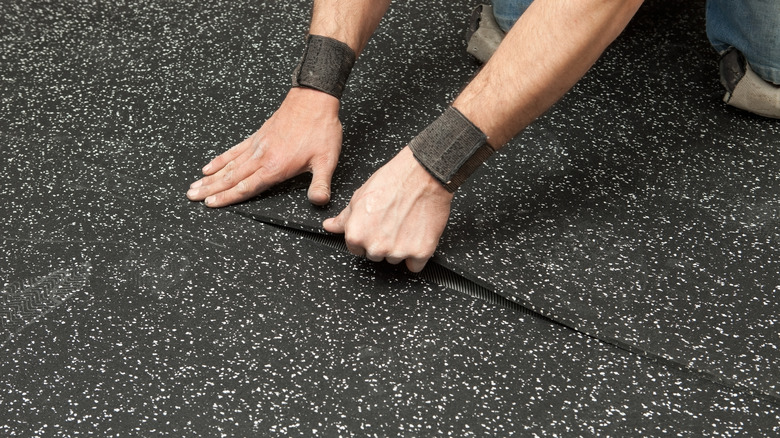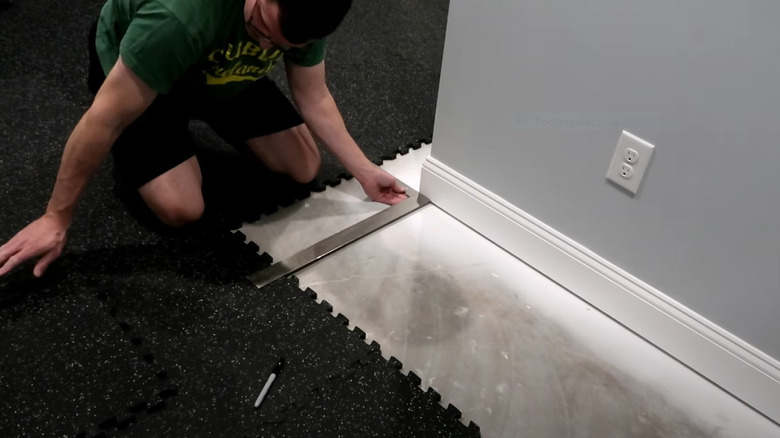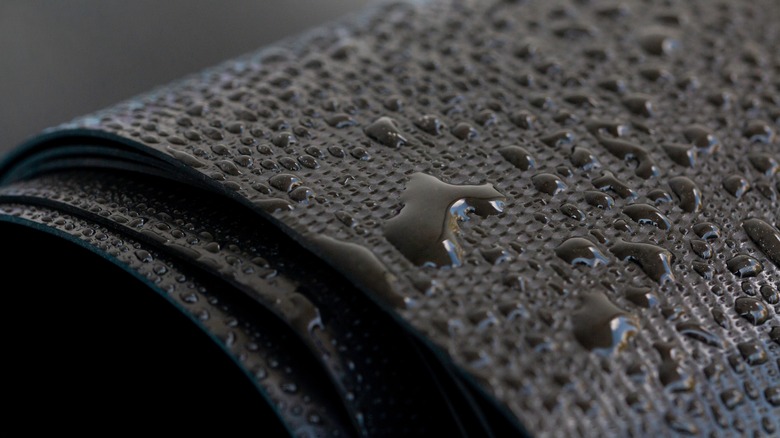The Pros And Cons Of Putting Rubber Flooring In Your Garage
We may receive a commission on purchases made from links.
Far beyond its aesthetic appeal, the garage floor serves as the groundwork for treasured hobbies, repair projects, and sometimes, a home gym or even an impromptu kids' play area. But the realm of garage floor protection is awash with stunning variety, spanning from concrete sealers and epoxy coating to vinyl planks. Amidst this diversity emerges rubber flooring, an option increasingly commanding attention not just in garages but in high foot-traffic areas in educational institutions, fitness centers, and healthcare facilities.
Understanding the pros and cons of rubber garage flooring will pave the way for informed decisions when transforming that mundane space into a place that mirrors your personality and lifestyle choices. The pros are a mixed bag of durability, underfoot comfort, noise reduction capabilities, sustainability, and easy maintenance. But don't get carried away just yet. This type of flooring has its share of downsides, including heavyweight materials and its appallingly poor relationship with car oils.
Regarding rubber flooring options for your garage, you're faced with yet another critical decision: tiles or rolls. Each has inherent qualities: tiles with interlocking borders for easy installation are ideal for smaller garages, such as the Eco-Lock Isometric Blue Rubber Gym/Weight Room Flooring Tiles selling for $2.99 per square foot at The Home Depot. Roll options, on the other hand, like Rubber-Cal Diamond-Plate Rubber Flooring Rolls on Amazon are available as large sheets and fit larger spaces.
The pros of rubber flooring for garage
Durability is one of the impressive pros of garage rubber flooring. You get a flooring option that doesn't buckle under heavy loads and high foot traffic. So, if you're after a long-term garage floor companion that withstands the impacts of daily use, rubber flooring fits the bill. Next, let's talk comfort. Aren't garages supposed to be the antithesis of comfort? Not anymore! Rubber flooring revolutionizes the comfort game, providing a cozy surface under your feet. Whether you're tirelessly standing, walking, or spending countless hours tinkering with your projects, rubber flooring is there to back you up, reducing foot fatigue.
Rubber flooring for garages is also a master of soundproofing. Its softer texture gives hard surface flooring a run for its money by reducing sound transmission between floors and rooms. So go ahead, crank up that power tool, or blast your favorite tunes. An extra cherry on top is the safety factor. With its high traction, rubber flooring resists slips like a pro, promising a secure environment for all your garage activities. And while you might think maintaining this garage flooring solution must be a nightmare, it's quite the opposite. Just vacuum regularly and mop it occasionally with a mild cleaning solution, and you'll never have to break a sweat scrubbing it. And sourced from sap extracted from rubber trees without much harm, rubber flooring is sustainable.
What are the disadvantages of rubber flooring for garage?
Rubber garage flooring is a high-stakes game, demanding a fatter slice of initial investment than alternatives like vinyl. Sure, rubber has its charm, but it's a heavyweight contender that drives up shipping costs, too. Eyeing that initial price tag might make you feel like you're trying to muscle into the luxury marketplace on a used car budget. But remember, while the upfront costs may sting, rubber's long-term benefits could steer you into a victory lap in the future. Moving on with our list of the cons of garage rubber flooring, we encounter sensitivity issues. Rubber floors might not play nice with specific solvents or cleaners. Worse still, park your car in the same garage, and you might realize rubber and automotive fluids are the car world's version of water and oil — not the best of pals.
In addition, under the rubber flooring's tough exterior is a constant fear of damage by sharp objects. Think of high heels, sharp furniture legs, and anything with pointy edges. Lastly, we can't ignore the aesthetic roadblock. No doubt, various rubber flooring designs are zipping up the race, but a scarcity of colors and patterns could make the style enthusiast in you stall on the starting line. As for the installation, rubber rolls are hefty, and the very characteristic that lends them durability can turn against a DIYer during installation. Additionally, covering expansive garage spaces with rubber floor interlocking tiles can be time-consuming.


